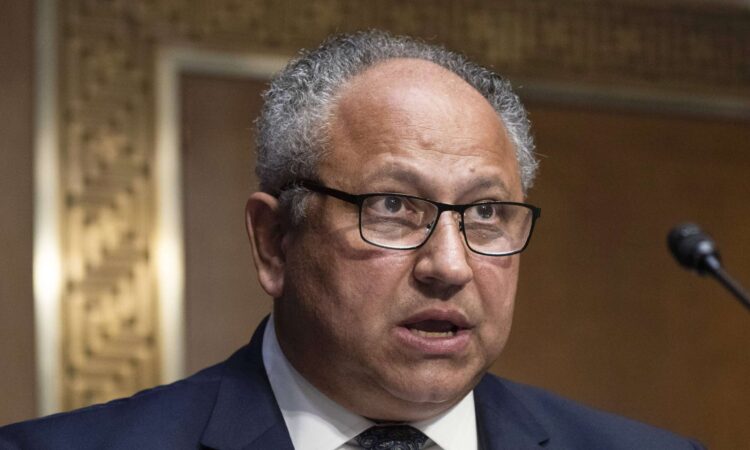
The Navy is standing up a council to counter “adversarial” economic activities, including supply chain disruptions and intellectual property theft, that directly impact the service.
The Maritime Economic Deterrence Executive Council, or MEDEC, will focus on addressing risks related to foreign investments, enhancing supply chain resiliency and protecting innovation, technology and research efforts.
“While the work to protect our defense industrial ecosystem by each organization is not new, bringing them together as a unified, focused council to address maritime economic deterrence allows us to better synchronize our efforts,” Navy Secretary Carlos Del Toro said at the Aspen Strategy Group event Thursday.
The council will be co-chaired by Vice Admiral Francis Morley, the principal military deputy to the assistant secretary of the Navy for research, development and acquisition and Chris Diaz, the secretary’s chief of staff.
MEDEC will include representatives from various sectors, including the research and development community, critical infrastructure subject matter experts, the acquisition community, as well as law enforcement and intelligence organizations.
The council will use authorities already granted to the Navy, according to Del Toro.
Given a shift in reliance on the private sector to drive technology advancements that the Navy wants to leverage, including unmanned systems, advanced sensor technologies and artificial intelligence, Del Toro said the service needs to adjust its approach to protecting next-generation capabilities from the earliest stages of their development.
“The work of MEDEC is more than just preserving military advantages for our Sailors and Marines — we are undertaking these initiatives to better support our business and investment communities that we rely on to design, test and build the technologies and capabilities we adopt and field,” Del Toro said.
“As we broaden our engagements with our nation’s start-up, investment, and business communities that are responsible for driving advances in critical technologies, the work of MEDEC will only become more important.”
The Navy has been exploring unmanned surface vessels as a force multiplier and situational awareness tool. Task Force 59, for example, the service’s first task force driven by artificial intelligence, has already reached its full operational capability. Since its establishment, it has tested and operated more than 23 different unmanned systems. Last month, the task force launched a new task group with a focus on unmanned operations. The task group’s objective is to use unmanned systems to bolster security in the Middle East region.
The move also comes amidst the rollout of Project Overmatch, the service’s contribution to the Pentagon’s Combined Joint All-Domain Command and Control, or CJADC2. The goal is to establish seamless communication and data-sharing capabilities across its entire ship fleet and all its assets. The project has been veiled in secrecy since its inception in 2020, with little to no details available about the initiative.
The council’s establishment also follows the White House’s efforts to bolster the country’s semiconductor capacity and catalyze research and development through the CHIPS and Science Act.
Last week, the White House Office of Science and Technology Policy published an updated list of critical and emerging technologies significant to national security. The list includes artificial intelligence, advanced computing, data security and cybersecurity technologies and networking technologies.
Additionally, the Pentagon recently released the first-ever National Defense Industrial Strategy, laying out the Pentagon’s approach to strengthening the industrial base.
“We in the Department of the Navy are closely aligned with the NDIS, the broader Department of Defense community, and the White House on this issue,” Del Toro said.
Copyright
© 2024 Federal News Network. All rights reserved. This website is not intended for users located within the European Economic Area.
